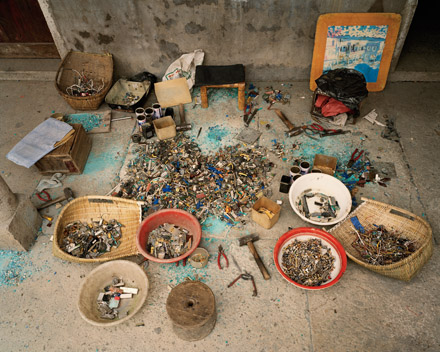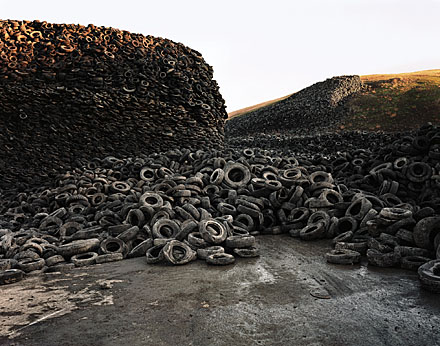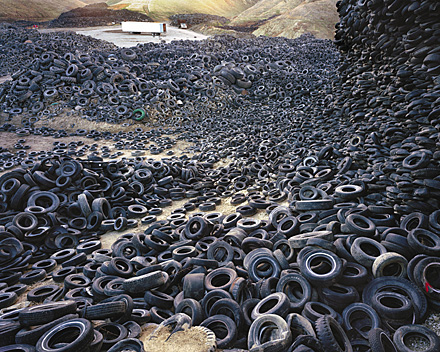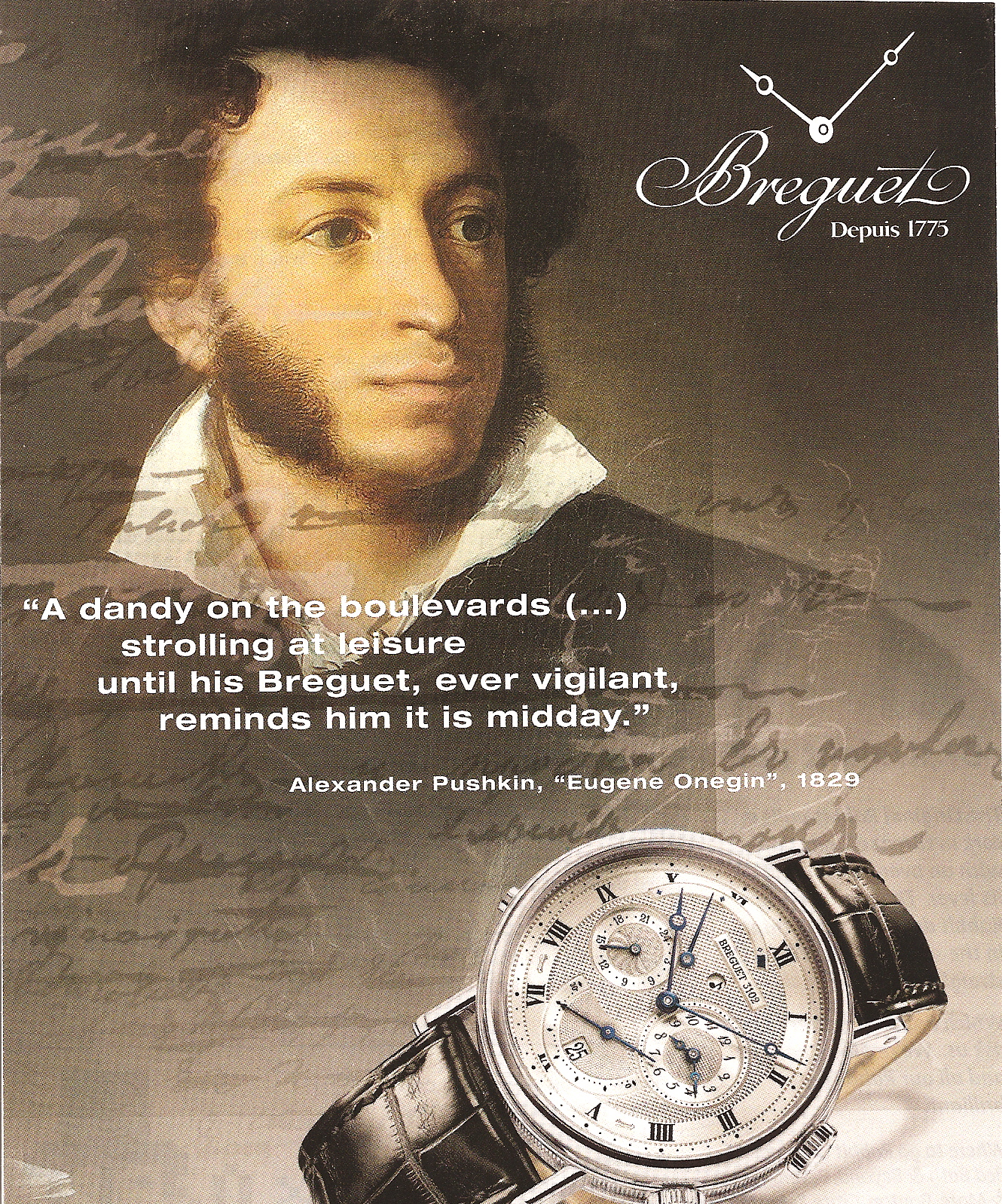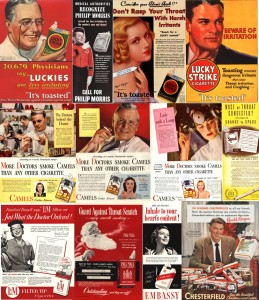In a previous post, I shared some photographs by Edward Burtynsky of oil fields and mines. Burtynsky takes pictures with an eye towards the modern global economy. This set documents massive piles of waste sorted for recycling:
Three pictures of the Oxford tire pile in Westley, California (1999):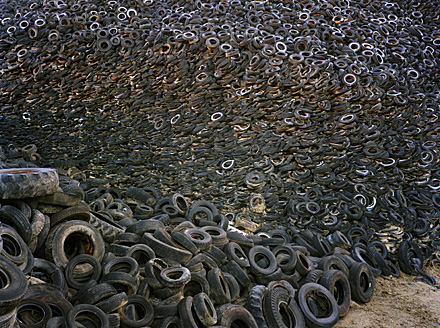
Densified Oil Drums in Hamilton, Ontario (1997):
Metal for recycling in Hamilton, Ontario (1997):
Metal for recycling in Hamilton, Ontario (1997):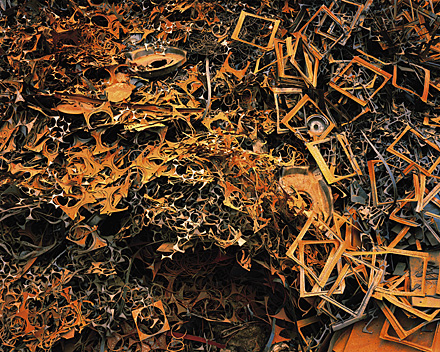
Plastic toy parts in Guiyu, Guangdong Province (2004):
Circuit boards in Guiyu, Guangdong Province (2004):
Recycling work station (I believe the worker is taking apart computers) in Zenguo, Zhejiang Province (2004):